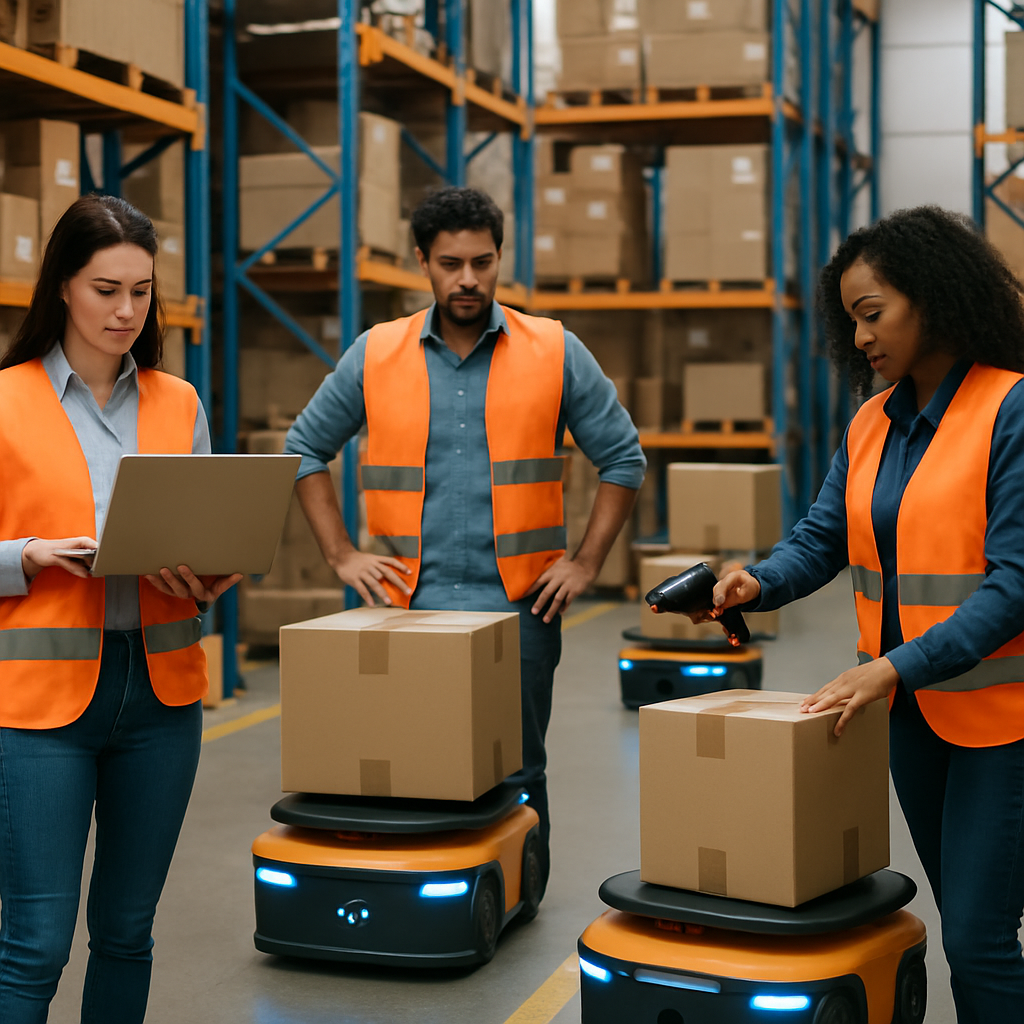
Artificial intelligence and robotics continue to reshape supply chains, but one truth remains constant: automation doesn’t replace people—it amplifies them. Distribution centers that succeed in 2025 are those that integrate human judgment with machine precision.
This article explores seven practical ways human-managed labor teams extract maximum ROI from warehouse automation, drawing insights from Gartner’s 2025 “Future of Supply Chain Work” report and real-world examples from high-volume DCs.
Automated systems rely on clean data. Managed warehouse teams serve as the first line of defense—verifying SKU labels, quantities, and conditions before scanning into WMS or robotics systems.
Why it matters: According to Deloitte (2025), 72 % of warehouse automation errors stem from upstream data entry. Human oversight prevents compounding mistakes.
No algorithm can anticipate every scenario—damaged pallets, mixed SKUs, or vendor mis-labels. Trained associates step in to resolve anomalies fast, keeping conveyors and AS/RS units running.
Throughput impact: Facilities with dedicated “automation exception teams” report 11 % less downtime per shift.
Robotics and AGVs need regular inspection. Managed labor programs include cross-trained tech operators who handle minor resets, swaps, and calibrations—freeing OEM techs for complex repairs.
ROI: FHI-style hybrid staffing can cut OEM service calls by 25 %.
Front-line associates generate the most actionable process insights. Daily huddles and digital Kaizen boards help translate those insights into WMS parameter changes or pick-path optimizations.
Result: Sustained 3–5 % weekly productivity lifts when feedback loops are formalized.
OSHA emphasizes that even autonomous zones require human spotters and lock-out protocols. Managed labor teams enforce these standards while coordinating with automation to prevent collisions and pinch hazards.
Outcome: Safer blended environments and lower Total Recordable Incident Rates (TRIR).
When automation stalls, people keep freight moving. Trained manual-recovery teams ensure SLAs aren’t broken while systems reboot.
Case study: One frozen-foods DC avoided $90 K in carrier penalties during a WMS outage by redeploying managed labor to manual load sequencing.
Managed labor partners often provide structured onboarding that includes exposure to automation tech—preparing associates for future technician roles and strengthening retention.
Long-term gain: Turnover drops 10 % when workers see clear advancement into tech-enabled roles.
Automation delivers its highest ROI only when paired with well-trained, motivated human teams. The right managed labor model ensures machines run at peak capacity—and people do too.
Q1: Will automation eventually replace warehouse labor?
No. Automation reduces repetitive tasks but expands demand for skilled labor in monitoring, analysis, and maintenance.
Q2: What’s the best way to measure automation ROI with managed labor?
Track cost-per-case, downtime hours, and throughput before/after automation integration.
Q3: How can managed labor providers support tech adoption?
They recruit adaptable workers and deliver training aligned to WMS, robotics, and safety protocols.
Q4: Is automation practical for mid-size DCs?
Yes—hybrid labor models let mid-size facilities adopt partial automation cost-effectively.
Q5: What KPIs link human and robotic performance?
Cases per hour, error rate, downtime minutes, and labor cost per case.
👇📅 We're here to help. There's no pitch - just a conversation. 📅👇
In any market, your supply chain can make or break your ability to compete well. Don't leave that to chance. We can help you create a stronger operation, so you never fall behind the competition.
Stop worrying about labor challenges and start enjoying a safe, lean, and rock-solid supply chain.
(800) 849-3132 | © FHI. All rights reserved.